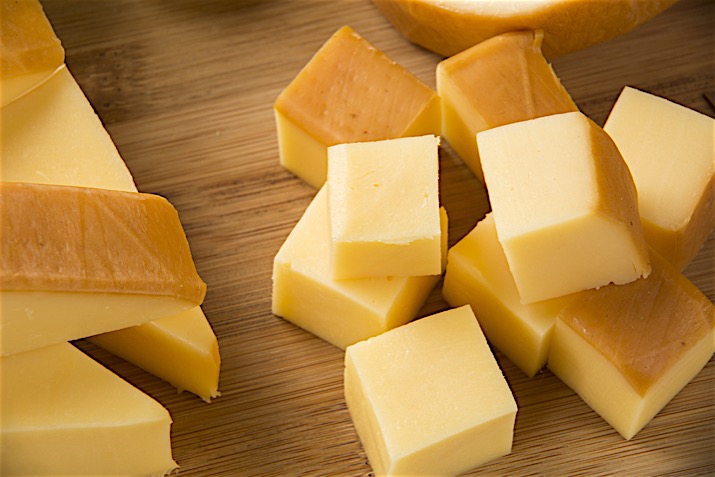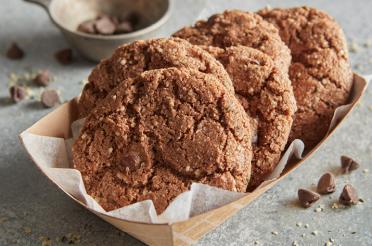Article
Provolone

Enter any authentic Italian grocery store, and you're bound to see provolone cheese tied with cord and hanging from the rafters. Provolone originally hails from southern Italy but is now manufactured in northern Italy, Japan, and the United States. The name comes from the Neapolitan "prova" or "provola," meaning "globe-shaped." Today you can find a variety of shapes, though, from those resembling a squat pear or pumpkin to giant sausages.
A semi-hard cheese made from cow's milk, provolone is shaped, immersed in a salt bath, then washed with cold water and wrapped with rope, which impresses marks on the finished cheese. Then the cheese is aged, or smoked and aged, and hung. Some provolones are aged for two or three months, others for a year or more. As the cheese ripens, the color becomes deeper yellow and the flavor stronger.
Provolone Dolce is a mild provolone with a thin, waxed rind, a white/pale yellow interior and a milky, smooth, semi-soft texture. It's aged no more than two or three months and is available smoked and non-smoked. Piccante, which is aged three months to more than a year, is darker yellow and stronger in flavor than Dolce. It's also available in smoked and non-smoked versions. Applewood is often used for smoking provolone.
There are names for the different shapes of provolone, too. Melon-shaped provolone is called Mandarino, Mandarone, or Provoletta, while sausage-shaped is called Pancetta, Pancettone, or Salamino. Provolone with a truncated cone shape is called Gigante, Gigantino or Gigantone, and bottle-shaped varieties are known as Fiaschetta.
Two provolones have been given DOP ("Protected Designation of Origin") status by the EU: Provolone Val Padana and Provolone del Monaco. There are mild and piquant, smoked and non-smoked versions of each in a variety of shapes.
Provolone is a versatile cheese—think mozzarella with a little more zing. In fact, it's quite compatible with mozzarella and other Italian cheeses. Dig into this Muffaletta Sandwich for proof. And cut some into cubes for topping your next green salad.
Provolone melts well and so it's ideal for hot sandwiches, grilled burgers, stuffed shells, lasagna, macaroni and cheese and other casseroles. This Garden Vegetable Bake celebrates an array of hearty vegetables and quinoa, melded and topped with provolone. Provolone is a natural on pizza, too, complementing roasted peppers, goat cheese, caramelized onions and balsamic vinegar in this perfect Caramelized Onion Pizza.
Provolone makes a great bruschetta topping, and is a perfect addition to an antipasto platter, especially when paired with salami and veggies, as in this Asparagus Antipasto Platter.
Provolone is also delectable with figs, melon wedges, nuts, olives, pears, peppers and prosciutto.
Serve a young provolone with pale ale or a fruity wine. Serve stronger, aged provolone with a hearty ale or older wine, like Amarone, Valpolicella, Nebbiolo or Barbaresco. Any provolone is good with cocktails, Chardonnay, Chianto Riserva or Merlot.
Wrap your provolone in cheese paper or parchment paper and store in the refrigerator for two to three weeks. If mold develops, simply cut it away and rewrap in fresh wrap.
You can also freeze provolone, though it may become milder and more crumbly. It's still excellent for sauces, soups and casseroles and will keep in the freezer for two months or more. To freeze, cut the cheese into 1/2-pound or smaller pieces and wrap in freezer wrap.
If you're going to bring home a can-do cheese for anything from appetizers to dessert, you can't do better than the renowned Italian provolone.












